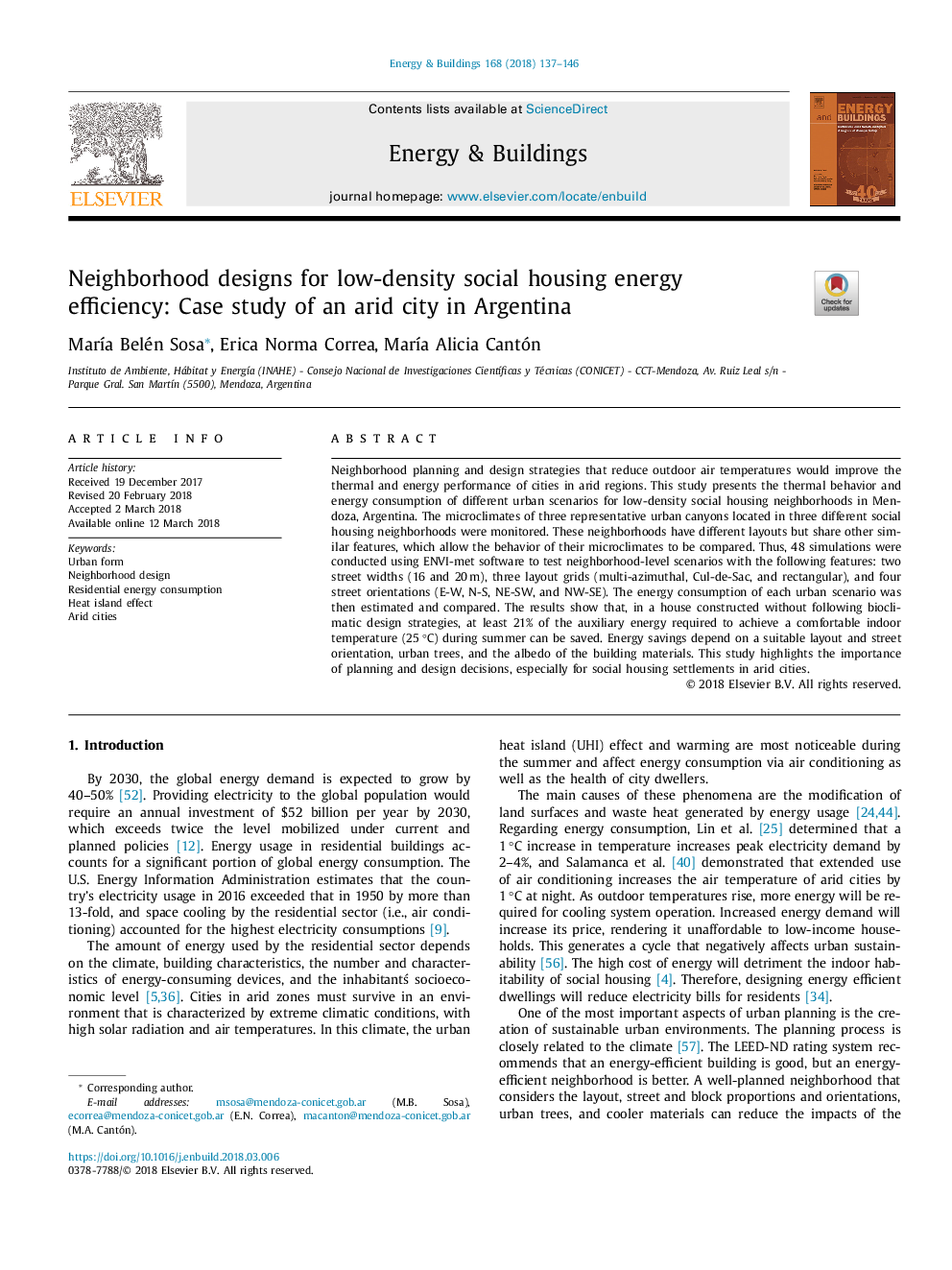| Article ID | Journal | Published Year | Pages | File Type |
|---|---|---|---|---|
| 6728028 | Energy and Buildings | 2018 | 10 Pages |
Abstract
Neighborhood planning and design strategies that reduce outdoor air temperatures would improve the thermal and energy performance of cities in arid regions. This study presents the thermal behavior and energy consumption of different urban scenarios for low-density social housing neighborhoods in Mendoza, Argentina. The microclimates of three representative urban canyons located in three different social housing neighborhoods were monitored. These neighborhoods have different layouts but share other similar features, which allow the behavior of their microclimates to be compared. Thus, 48 simulations were conducted using ENVI-met software to test neighborhood-level scenarios with the following features: two street widths (16 and 20â¯m), three layout grids (multi-azimuthal, Cul-de-Sac, and rectangular), and four street orientations (E-W, N-S, NE-SW, and NW-SE). The energy consumption of each urban scenario was then estimated and compared. The results show that, in a house constructed without following bioclimatic design strategies, at least 21% of the auxiliary energy required to achieve a comfortable indoor temperature (25°C) during summer can be saved. Energy savings depend on a suitable layout and street orientation, urban trees, and the albedo of the building materials. This study highlights the importance of planning and design decisions, especially for social housing settlements in arid cities.
Related Topics
Physical Sciences and Engineering
Energy
Renewable Energy, Sustainability and the Environment
Authors
MarÃa Belén Sosa, Erica Norma Correa, MarÃa Alicia Cantón,
